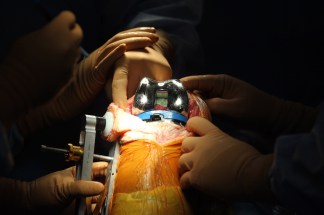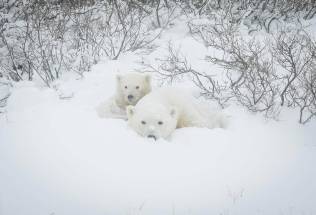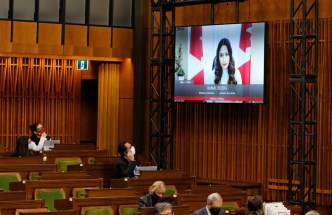Too much to bear Climate change is depriving polar bears of a day’s worth of ice each year; unchecked, by the end of the century, that will kill them off
Read this article for free:
or
Already have an account? Log in here »
To continue reading, please subscribe:
Monthly Digital Subscription
$0 for the first 4 weeks*
- Enjoy unlimited reading on winnipegfreepress.com
- Read the E-Edition, our digital replica newspaper
- Access News Break, our award-winning app
- Play interactive puzzles
*No charge for 4 weeks then price increases to the regular rate of $19.00 plus GST every four weeks. Offer available to new and qualified returning subscribers only. Cancel any time.
Monthly Digital Subscription
$4.75/week*
- Enjoy unlimited reading on winnipegfreepress.com
- Read the E-Edition, our digital replica newspaper
- Access News Break, our award-winning app
- Play interactive puzzles
*Billed as $19 plus GST every four weeks. Cancel any time.
To continue reading, please subscribe:
Add Free Press access to your Brandon Sun subscription for only an additional
$1 for the first 4 weeks*
*Your next subscription payment will increase by $1.00 and you will be charged $16.99 plus GST for four weeks. After four weeks, your payment will increase to $23.99 plus GST every four weeks.
Read unlimited articles for free today:
or
Already have an account? Log in here »
Hey there, time traveller!
This article was published 26/11/2021 (1478 days ago), so information in it may no longer be current.
CHURCHILL — With tuques pulled down to their ski goggles and balaclavas and scarves bundled around their chins, runners trekked down the road outside of Churchill last Saturday morning. All of the drivers passing by double tapped their car horns, tooting their support for the participants of the Polar Bear Marathon.
Of course, trailing behind each runner on the road was a dedicated car or truck, inching along — a safety necessity when venturing outside during bear season in this part of the world.
Usually, by Nov. 20, the bears would be gone, moving back out onto the sea ice to start catching seals again after a summer of fasting. But as the runners trot down the road, waves continue to crash against the shores of Hudson Bay. Ice is nowhere in sight.
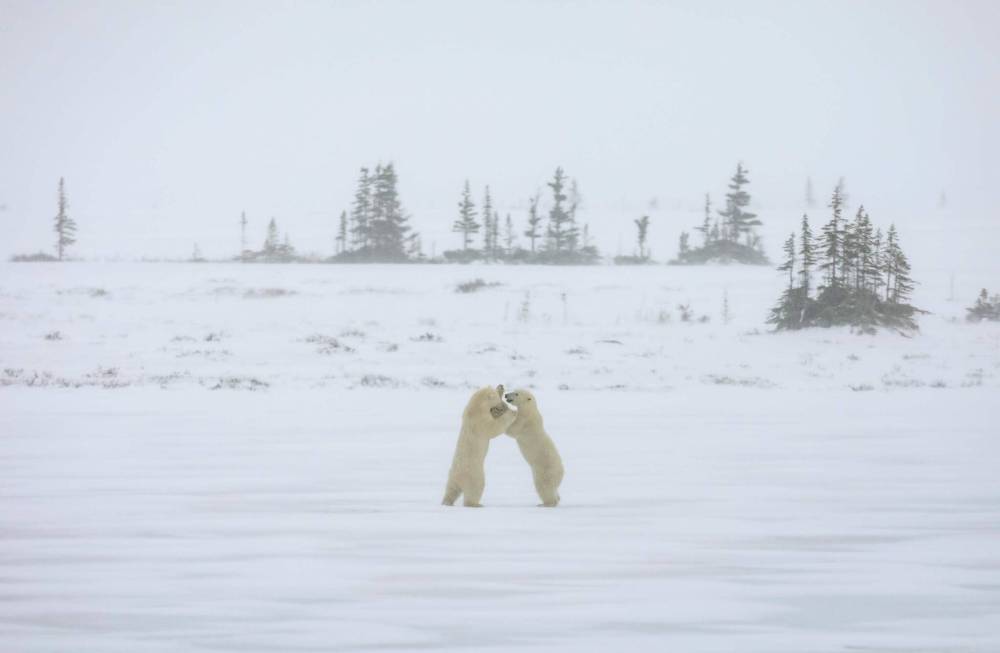
Tourism operators have already wrapped up their seasonal bookings to take visitors out onto the tundra to catch a peek of the bears before they depart until spring.
The tourists are gone but here the bears remain.
Iconic Churchill Tundra Buggy goes electric

Posted:
The Churchill travel company, Frontiers North Adventure, has been operating its fleet of iconic Tundra Buggies for decades but for various reasons John Gunter, CEO of the company, knew the fleet needed to be upgraded.
It was an opportune time for the region’s largest tourism operator, Frontiers North Adventures, to invite up a crew of politicians, Travel Manitoba representatives and other key figures in the province (along with the media) to unveil its new all-electric Tundra Buggy.
Many of those invited had never been to Churchill and had never seen the bears in the wild before. The awe washed across their faces as they watched a mother and cub spar in the middle of a frozen, snow-covered pond. Among them was Manitoba Minister of Conservation and Climate Sarah Guillemard.
“I’m kind of immersed in just the amazement of being this close to such majestic creatures. But yeah, there is that feeling of, you know, just what has been done to them. And it’s not fair,” Guillemard said.
Sitting in the seat behind the minister was Krista Wright, the executive director of Polar Bears International. She explained that while the good and bad years still toggle back and forth for the bears, the trend is clear: the spring thaw comes earlier, kicking the polar bears onto land sooner, and the fall freeze-up comes later, leaving bears stranded and starving for longer and longer periods.
Peer-reviewed research conducted by PBI scientists has forecast that if greenhouse gas emissions continue on their current track, virtually all polar bears will disappear from across the Arctic by the end of this century because of human-caused climate change.
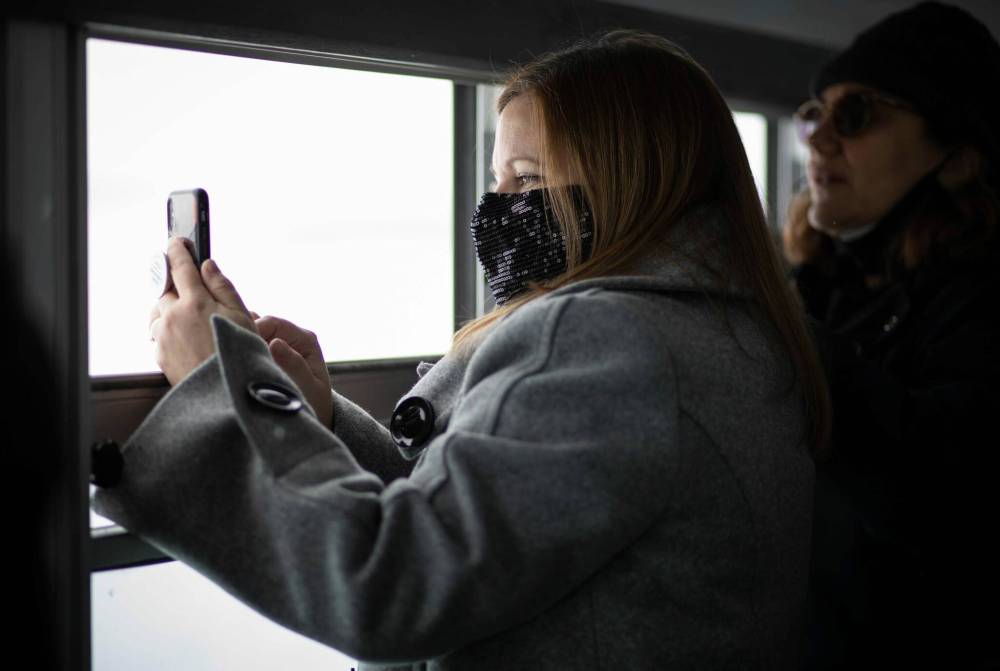
“So this is a good example, this year, where the ice did break up early, and the bears have been off the ice for 156 days. And right now we’re not seeing ice forming. I think tomorrow is going to be the first sign of hopefulness. But even then, the bay itself is a thermal mass. So it takes a while for it to actually cool off so that you can have that ice forming,” Wright said last week.
Bears can start leaving the Churchill shores as early as the end of October. And the latest date of departure, that any researchers around can recall, was Dec. 14, Wright added.
Guillemard, meanwhile, was in Churchill to tout the province’s investment in the new electric Tundra Buggy as a show of the Progressive Conservative government’s leadership on the climate change file.
“The juxtaposition of being here celebrating a clean new vehicle that’s going to reduce our emissions, while we’re seeing the impacts of years of not acting. You know, you’re balancing that recognition of just how devastating this is on the wildlife,” Guillemard said. “But balancing that with hope. And I think that there’s a real lack of hope when you’re speaking to a lot of people when we talk about this climate crisis.”
A report released in July by the Pembina Institute graded all provinces on their climate policies. The PC’s strategy in Manitoba was largely panned for failing to set emissions reductions targets, and instead opting for “carbon savings accounts” with reductions that are far too low to comply with national and international goals of limiting global warming beneath two degrees Celsius.
Manitoba received failing grades in most climate policy categories and, based on the current government’s plans, the province’s emissions are expected to continue growing by six per cent to 2030.
“I don’t think that anyone would say that anyone’s doing enough when we see the impacts of the (extreme) weather events. So saying, ‘Oh, we’re doing enough’ is essentially saying there’s no more to do. And I don’t believe that. And our government doesn’t believe that. There’s always going to be more to do,” Guillemard said.

•••
Andrew Derocher, a decades-long polar bear researcher based at the University of Alberta, watches the familiar story play out on his computer screen. Collars and ear tags on adult bears allow him to see when they are able to successfully move out onto the ice, but all dots remain firmly on shore, and they’ll likely still be there for a while longer.
The bears, as of last week, had spent 156 days on land. As of today, it’s now 163. Each day, bears burn roughly a kilogram of fat, Derocher explains, so the longer they stay on land in any given year, the more weight they have to pack on over winter to stay healthy.
Up to 150 days, or thereabouts, that’s no problem for the animals. But once bears start having to stay on land for 180 days or so, especially for consecutive seasons, that’s when the bears — especially the young ones — will start having real trouble.
“The typical weakest points in the population are females with cubs. And once the mother starts to deplete her energy reserves, she’ll just stop nursing and for cubs that were born in the spring, that is a huge pressure point for them. Because typically, they don’t have a lot of fat reserves themselves. They’ve been using all of their energy for growing. So the cubs are not buffered by anything in the environment,” Derocher said.
David Barber, the Canada Research Chair in Arctic System Science at the University of Manitoba, says on average the area is losing more than a day of sea ice cover per year now, and has lost more than a month of ice cover in the past few decades.
“We understand the physics very well. There’s extra heat going into the ocean, and that heat has to dissipate before you can start to form the sea ice. And so it’s not rocket science, as they say, it’s quite clearly defined,” Barber said.

For a body of water like Hudson Bay, where the wind is strong — and getting stronger with climate change — it takes extra time for ice to form, Barber explains, because the entire top layer of water must churn and cool before freeze up will even begin.
“In my own career, I started to raise those alarm bells about 25 years ago, maybe even 30 years ago. And so I’ve been trying to tell people for a long time that this is not something we can just ignore, and hope it goes away,” Barber said.
“If you’re a polar bear, and you’re trying to get out on the sea ice so you can eat, so you don’t have to starve, you see the effects of the sea ice cover quite dramatically. And, people are concerned about these things. But we need to get on with doing something about it. It’s a very big struggle to try to bring the world into a unified framework to say we have to reduce our reliance on fossil fuels,” Barber said.
But does the buck stop with politicians alone? Barber isn’t convinced of that.
“Policy decisions are so slow in coming. And I can’t really blame that on a government, I have to blame that on the public. Because ultimately, the public is who holds politicians accountable,” Barber said. “I would have loved to see the province do more about climate change — they really need to do more about climate change. But the root of that issue is that the public. The public needs to pay attention.”
•••
There’s one last caveat, though: the province has failed to compile a comprehensive conservation management strategy that addresses the imminent crisis for the bears.
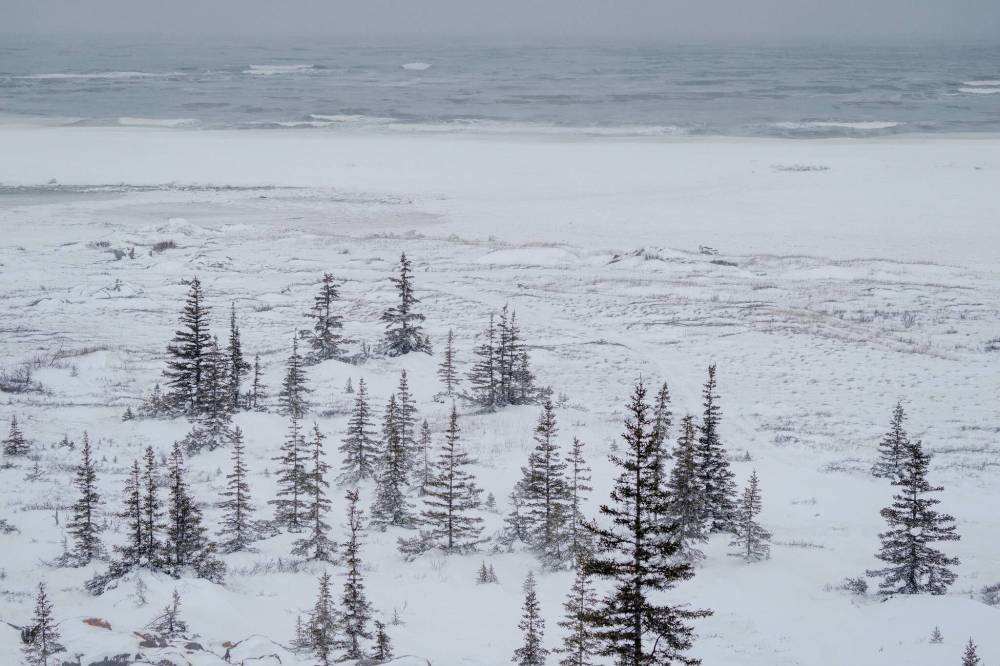
There’s no intervention or rescue of cubs, the bears at greatest risk. They are left to die when they are orphaned by their mothers. This has been the government’s policy since public outrage was sparked in 2017 over the number of bears that were being rescued and brought to Winnipeg.
Stephen Petersen, the director of conservation and research at the Assiniboine Park Conservancy, says he was consulted on a potential management strategy provincial representatives were working up. But the waiting has gone on and nothing has ever been made public.
This year is not likely to be the one the lack of road map will matter, but that time will come and the province is not prepared to deal with a potential widespread die-off event for the iconic animal.
“When we start to have a whole bunch of bad years in a row, we’ll end up with lots of bears that are in bad condition going into the fall and late freeze up. Then we’ll be spurred to do something. It’s a crisis management approach rather than a proactive one,” Petersen said.
Last month, then-Premier Kelvin Goertzen announced the polar bear was becoming an official emblem for the province.
“Adding polar bear to our emblem, making it our provincial animal, in the absence of some sort of stated strategy for managing those populations, that’s a bit of a disconnect,” Petersen said.
When Conservation and Climate Minister Guillemard was asked about this, her answers were limited as the wildlife file is now the responsibility of the agriculture minister.
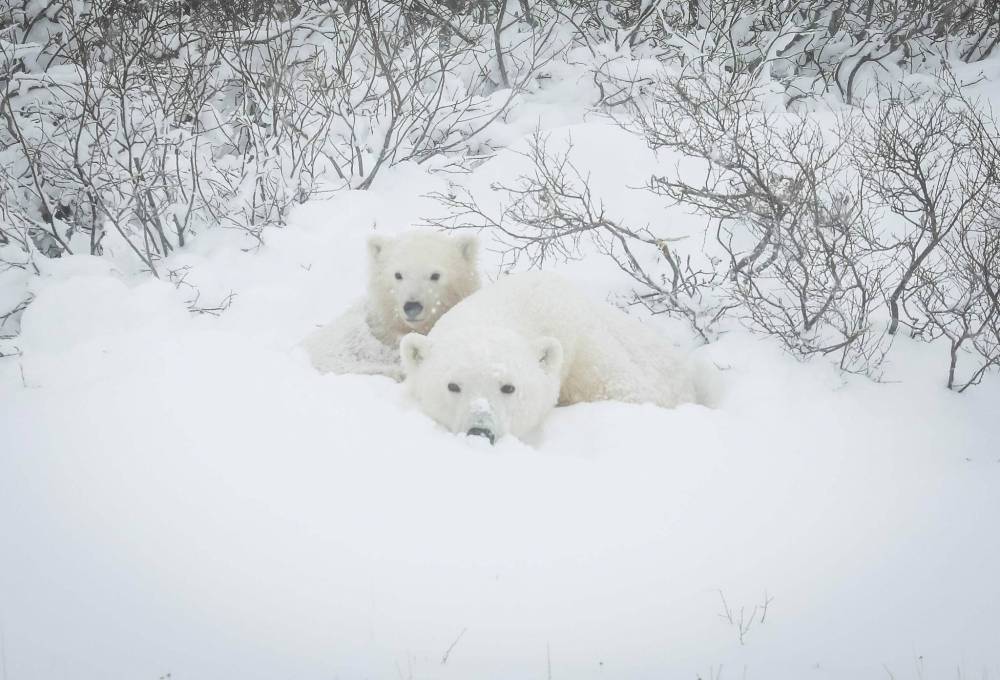
“It’s still a priority, it’s still being looked at, and I have every confidence that (Agriculture and Resource Development) is going to be coming forth with the direction that they want to go,” Guillemard said.
But she’s not privy to a timeline for that strategy.
Meanwhile, over the minister’s shoulder and out the window, the mother and her cub have settled down and stopped sparring in the distance and are now nestled into a nook along the pond’s shore behind some bare bushes. Here they will wait until the ice comes.
— Special to the Free Press



